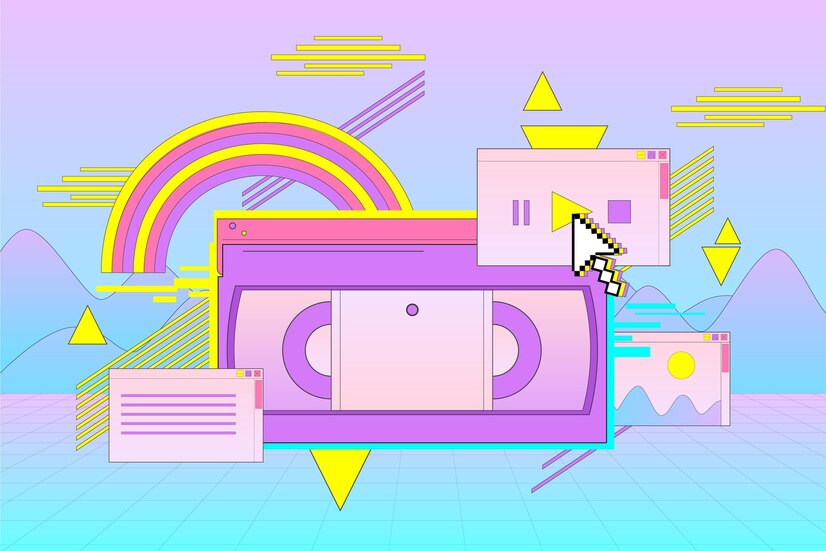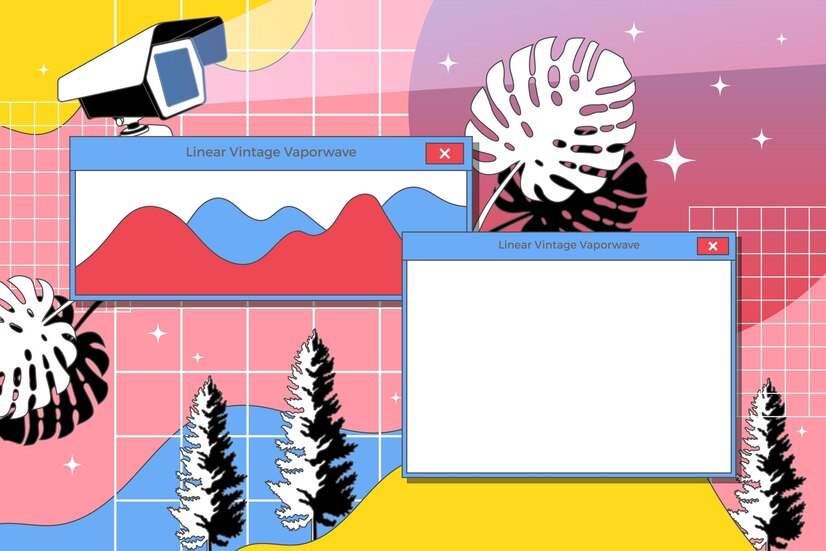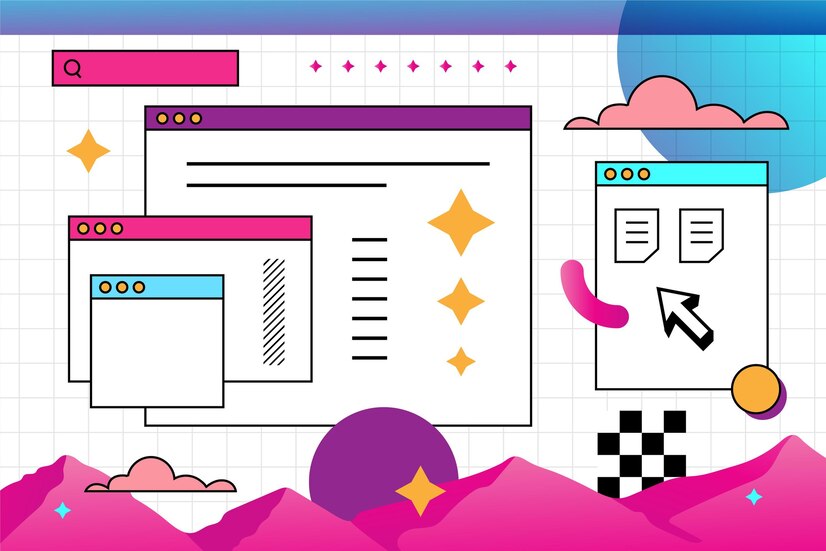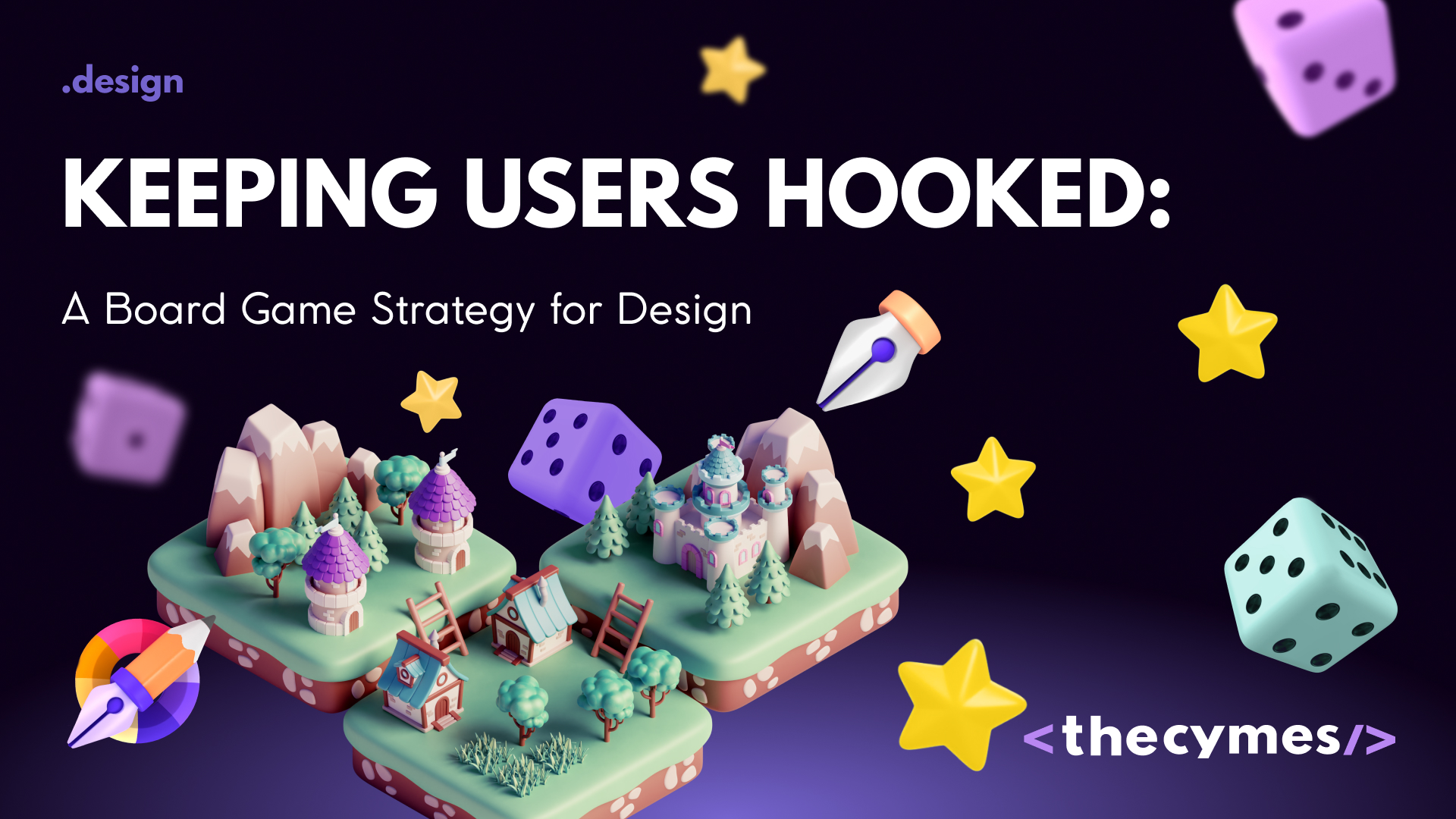Table of Content
From Y2K to the Future: Web Design of the 2000s and Beyond
/>Explore the evolution of design from the flashy aesthetics of the 2000s to the minimalism and functionality of 2020s. Discover how trends in aesthetics, user experience, typography, mobile-first design, and augmented reality have transformed the design landscape.Introduction
The evolution of trends and styles is a constant. The 2000s marked an era of technological advancements and emerging digital platforms, while 2020s stands as a pinnacle of innovation and creativity. Join us on a journey as we explore the striking differences between design in the 2000s and the design landscape of 2020s.
Aesthetics and Visual Language

Image from FreePik
The design aesthetics of the 2000s were characterized by a combination of vibrant colors, flashy gradients, and glossy reflections. Websites and interfaces were filled with skeuomorphic elements, imitating real-world objects and textures. This approach aimed to create a sense of familiarity and novelty. Heavy graphics and flashy animations were prevalent, often overwhelming the user with sensory stimuli.
In 2020s we witness a significant shift in design aesthetics. Minimalism and simplicity have taken center stage. Clean lines, ample white space, and bold typography dominate the visual landscape. Flat design, known for its simplicity and clarity, has become the norm. Designers now focus on creating intuitive user experiences, prioritizing functionality over embellishment.
User Experience (UX) and Interaction
The UX landscape has evolved significantly over the years. In the 2000s, websites were often cluttered, with an abundance of menus, buttons, and options. Navigation was complex, requiring multiple clicks to access information. Flash-based websites were popular but had limited compatibility and slower loading times. Fast forward to 2020s, user-centric design principles dominate the industry. Websites and applications prioritize seamless navigation, intuitive interfaces, and efficient information retrieval. The rise of responsive design ensures a consistent user experience across various devices, catering to the needs of mobile users. Today, designers focus on creating user interfaces that are visually appealing, easy to navigate, and optimized for a range of devices.
Typography and Branding
Typography has experienced a dramatic transformation over the years. In the 2000s, designers favored decorative fonts and excessive drop shadows to create attention-grabbing headlines. Branding often relied on bold, eye-catching logos with intricate details. 2020s, however, embraces simplicity in typography. Clean, legible fonts are preferred to enhance readability and convey brand messages effectively. Minimalistic logos with streamlined designs have become the norm, emphasizing brand recognition and versatility across different platforms. Today, designers understand the importance of creating a consistent visual identity that resonates with the target audience.
Mobile-First Design

Image from FreePik
The proliferation of smartphones has revolutionized design practices. In the 2000s, mobile design was an afterthought, with websites primarily tailored for desktop users. Mobile versions often featured scaled-down content and limited functionality.
Now with the exponential growth of mobile users, designers prioritize creating responsive, mobile-friendly experiences. Content is adapted to fit smaller screens, and touch-friendly interactions are paramount. Today, designers understand the importance of delivering a seamless user experience across devices, ensuring that users can interact with content effortlessly, regardless of the device they use.
Integration of Augmented Reality (AR)
One of the most significant differences between the 2000s and 2020s is the integration of augmented reality (AR). AR has transcended the realm of gaming and emerged as a powerful tool for enhancing user experiences. In 2020s, designers incorporate AR elements to provide immersive experiences, whether in e-commerce, education, or entertainment. AR allows users to interact with digital objects in the real world, blurring the lines between the physical and the virtual. For example, furniture retailers now offer AR applications that enable customers to visualize how a piece of furniture would look in their own space. This integration of AR creates memorable and engaging experiences, driving user engagement.
Conclusion
As we compare design trends from the 2000s to the current landscape in 2020s, it becomes evident that design has evolved to prioritize simplicity, functionality, and user experience. The shift from flashy aesthetics to minimalism, the rise of mobile-first design, and the integration of augmented reality reflect the ever-changing needs and expectations of users. Embracing these trends allows businesses and designers to remain at the forefront of innovation and create meaningful experiences for their audience.




